Guides
How to Grow Pampas Grass Plants: A Complete Guide
Have you ever driven past a house and been totally wowed by tall, feathery plants waving in the breeze? That dramatic, elegant grass that instantly catches the eye? Yep, that’s Pampas grass plants. And you’re not alone in wondering, “Can I grow that in my yard?” or “How hard is it to take care of?”
The good news: it’s easier than you think. Whether you’re looking to create a natural privacy screen, bring some height to your landscaping, or even grow it in pots on your balcony, pampas grass can be your new favorite plant.
This guide will walk you through everything you need to know—from planting and growing to maintenance and container care—so you can grow pampas grass plants like a pro.
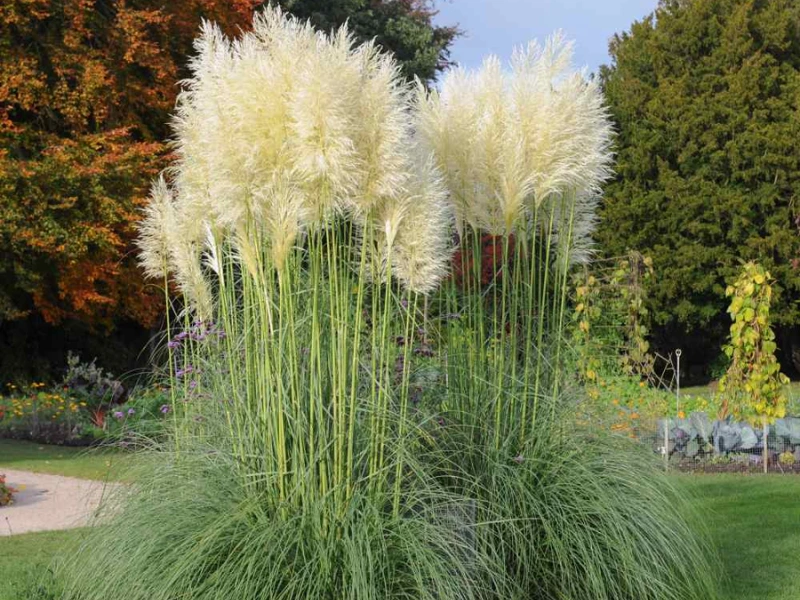
Read more: Start Your Garden Right on the First Day of Spring 2025: Must-Have Plants for a Thriving Garden
What is Pampas Grass?
Pampas grass (Cortaderia selloana) is a perennial ornamental grass native to the pampas regions of South America. It’s known for its tall, arching green blades and fluffy, plume-like flowers that bloom in late summer through fall. These plumes can be white, cream, or even soft pink, depending on the variety.
Why Gardeners Love It:
-
Striking visual impact: Adds texture, height, and movement to landscapes.
-
Low maintenance: Once established, it needs very little from you.
-
Drought-tolerant: A great option for areas with water restrictions.
-
Versatile: Works in traditional gardens, modern landscapes, and even containers.
It’s also a fantastic addition to xeriscaping, or water-wise landscaping, making it ideal for places like California, Arizona, and other arid regions in the U.S.
Best Time to Plant Pampas Grass
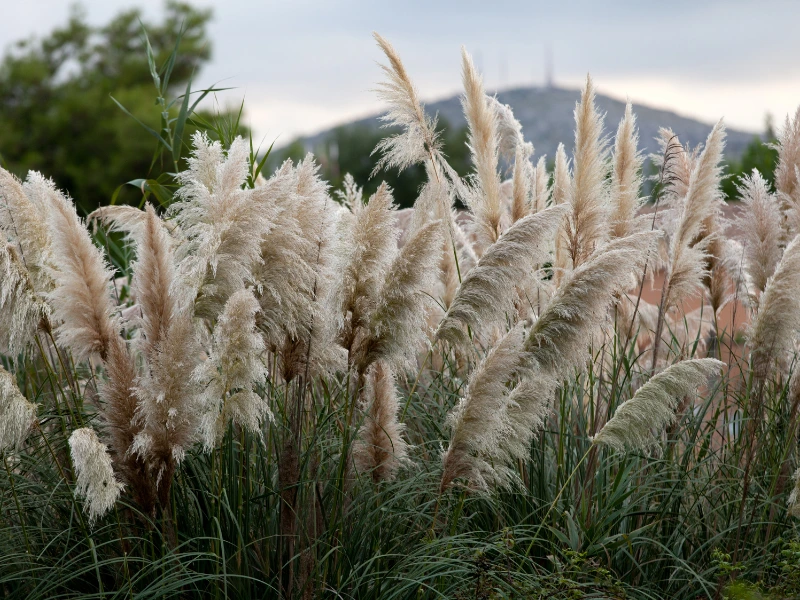
Timing your planting correctly makes a huge difference. So when is the best time to plant pampas grass?
Ideal Seasons
-
Spring (March to May): Gives your plant time to establish strong roots before the summer heat.
-
Fall (September to October): Perfect for areas with mild winters, allowing the plant to root comfortably before going dormant.
Avoid planting in the peak of summer or dead of winter. Pampas grass likes consistency and will struggle to establish if conditions are too extreme.
USDA Hardiness Zones
Pampas grass thrives in zones 7-11, but with proper care (especially if grown in pots), it can survive in zone 6 too.
How to Plant Pampas Grass Plants in the Ground
Do you have some open space in your yard begging for a little drama? Pampas grass might just be your new best friend. This tall, feathery beauty is low-maintenance, drought-tolerant, and makes a bold statement. Let’s make sure you plant it right from day one!
-
Pampas grass is a sun worshipper. Choose a location that gets at least 6 hours of direct sunlight every day. The more sunshine, the fluffier those plumes will be.
-
These grasses like their feet dry, so good drainage is a must. If your soil is sandy or loamy, you’re golden. Got clay-heavy soil? No worries—just mix in some compost or coarse sand to improve drainage and give those roots a happy home.
-
Make a hole that’s about twice as wide and just as deep as your pampas grass’s root ball. This gives roots room to stretch out and settle in.
-
Gently place the plant into the hole, keeping the root crown (that’s where the roots meet the stem) right at soil level. No burying it too deep!
-
Fill the hole back in with your soil mix, tamp it down gently to remove air pockets, and water deeply. That first drink helps settle everything into place.
A Quick Note on Spacing: Planning to plant more than one? Smart move—they look fantastic in clusters. Just make sure to leave 6 to 8 feet between each one. These grasses grow big and need their personal space.
Growing Pampas Grass in Pots (Yes, You Totally Can!)
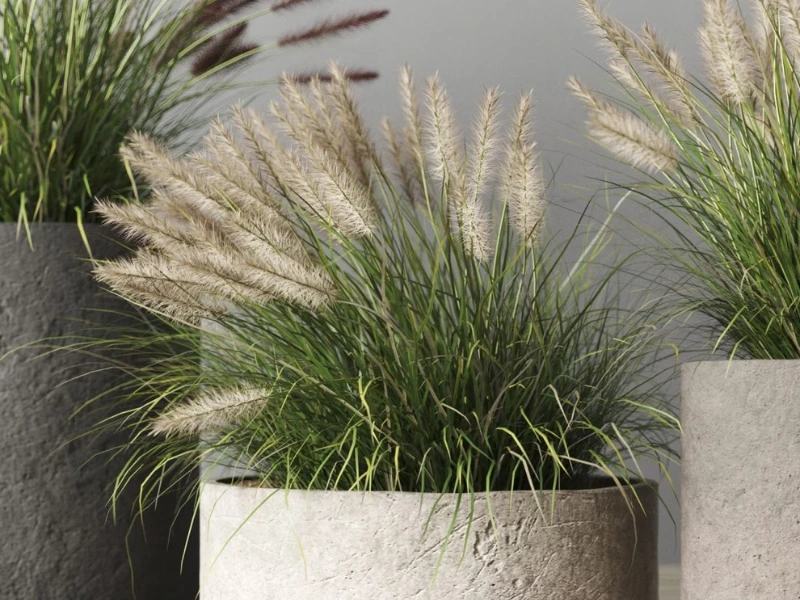
No backyard? No big deal. Pampas grass can absolutely thrive in containers, especially if you go for a dwarf variety like ‘Pumila.’ It still brings that fabulous feathery flair—just in a more patio-friendly size, topping out around 4 to 6 feet.
What You’ll Need
-
A roomy pot: Think big—at least 18 to 24 inches wide and deep. Pampas grass has a serious root system, and it likes a bit of elbow room.
-
The right potting mix: Use a well-draining mix (super important). Add in some sand or perlite to keep it light and airy—no soggy roots here, thank you very much.
-
Sunshine galore: Pick a spot that gets full sun for most of the day. This is what keeps those tall, fluffy plumes looking their best.
Container Care Tips
Potted pampas grass needs more frequent watering than its in-ground cousins. Aim to water when the top inch of soil feels dry, but don’t let it stay soggy—roots need air too!
In early spring, sprinkle on a slow-release, balanced fertilizer (something like 10-10-10 will do the trick). This gives it the fuel to shoot up strong and healthy.
If you’re in a colder zone (hello, frost!), either move the pot to a sheltered location like a garage or wrap it up with burlap or frostcloth to keep it cozy.
Pampas Grass Care Guide
Once established, pampas grass is incredibly self-sufficient. But a little routine care keeps it healthy and beautiful.
Watering
Pampas grass doesn’t like wet feet, but it does need a good drink now and then—especially during its first year as it gets settled.
-
Keep the soil evenly moist, especially during hot spells. Deep watering encourages strong root development.
-
After Establishment: Once it’s settled in (usually after the first growing season), you can ease off. Water only during extended dry spells or drought. It’s naturally drought-tolerant and thrives in tougher conditions.
Feeding
Pampas grass isn’t a heavy feeder, but a little nutrition in the spring can really help it bulk up and bloom.
-
What to Use: A balanced slow-release fertilizer like 10-10-10 or 14-14-14 works great.
-
When: Apply once a year in early spring, just before new growth begins. Water it in thoroughly for the best results.
-
Bonus Tip: If your grass looks a bit sparse or pale mid-season, a light top-up with compost or liquid fertilizer can help perk it up.
Pruning
Yes, it’s intimidating. Yes, it’s important. Pruning pampas grass is essential for both plant health and safety (plus, it makes room for all that gorgeous new growth!).
-
When to Cut: Late winter to very early spring—right before new shoots start to push through.
-
How Much: Cut it back to about 12 inches from the ground. It might look extreme, but trust me—it’ll come roaring back.
-
Why It Matters: Removing old, dry foliage helps prevent pests and gives space for new shoots to shine.
Safety Note: Always wear gloves and long sleeves. The leaves are sharp and can easily cause cuts!
Overwintering Pampas Grass
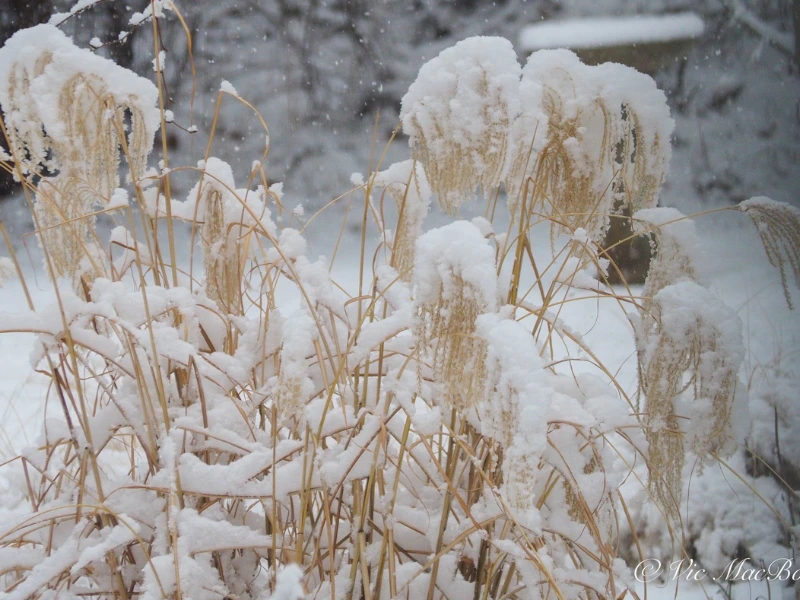
Pampas grass is tougher than it looks. In most climates, it can handle winter just fine with very little help from you—which is great news for low-maintenance gardeners! One of the best things you can do is… nothing. Seriously. Leave the foliage intact through fall and winter. It acts as a natural blanket, protecting the crown of the plant from frost and cold temperatures.
If you live in an area with especially harsh winters, consider adding a thick layer of mulch—about 2 to 4 inches—around the base of the plant. This gives it some extra insulation without smothering it. Come late winter or early spring, that’s your cue to prune it back hard and get ready for a fresh burst of growth.
Bonus Tips for Happy Pampas
-
Pampas grass sometimes sends up little baby clumps nearby. You can dig these up in early spring and replant or share with friends!
-
Some varieties can be a bit aggressive. If you’re worried, choose a sterile cultivar or dwarf variety to keep it manageable.
-
Those fluffy plumes look amazing in dried flower arrangements. Cut them in late summer when they’re at their peak and hang them upside down to dry.
Pampas Grass Landscaping Ideas
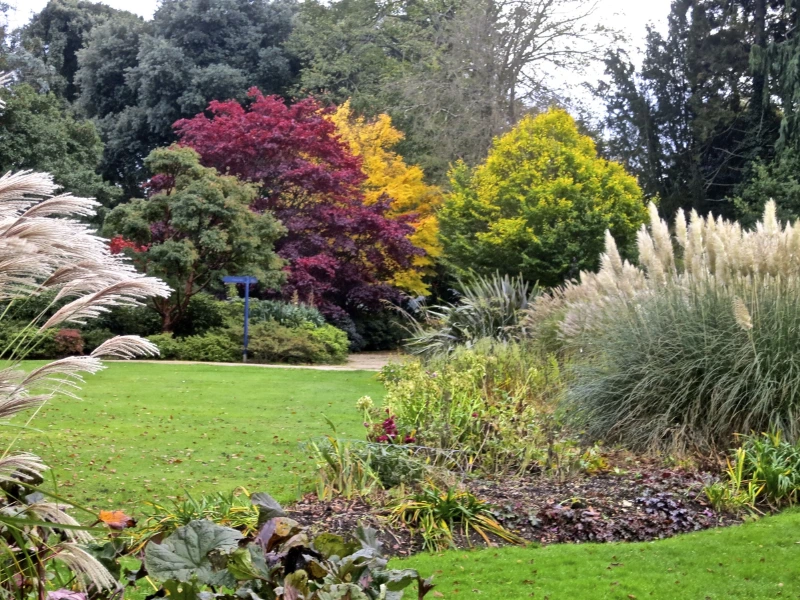
Want to really make your pampas grass pop? Here are some fun, practical, and stylish ways to use it in your landscape design:
Ideas to Inspire:
-
Privacy screen: Use as a natural divider around patios, pools, or property lines
-
Windbreak: Plant in rows to block wind in exposed areas
-
Accent plant: Use one large clump as a dramatic focal point
-
Mixed borders: Pair with drought-tolerant plants like lavender, sedum, or yucca for a modern look
Its fluffy plumes also look amazing when dried and used indoors for home decor.
How to Propagate Pampas Grass
Propagating pampas grass is best done by dividing mature clumps—and it’s actually pretty simple. Every few years, your plant will likely become large and dense. That’s the perfect time to divide it, encourage healthier growth, and expand your garden.
Here’s how to do it:
-
When to divide: Early spring (as early as March) when you start to see fresh new growth appearing.
-
Gear up: Wear heavy-duty gloves and long sleeves. Pampas grass blades are sharp and can cause cuts.
-
Divide the clump: Use a sharp shovel or garden saw to slice through the center of the plant. Pampas grass has a dense root system, so don’t be afraid to apply some muscle.
-
Dig out the section: Carefully dig around and under the section you’ve separated until it can be removed. Large clumps may require a bit of wrestling.
-
Replant: Fill in the original hole with soil, then replant your new division in a different location, spacing it 6 to 8 feet away from other grasses to give it room to thrive.
-
Water thoroughly: Give it a deep soak to help it settle in.
Dividing every 3-5 years keeps your plant healthy, controls size, and prevents overcrowding.
Potting and Repotting Pampas Grass
Dwarf pampas grass varieties are perfect for container growing, but they do need space to stretch out. Start with a generously sized pot—at least 18 to 24 inches wide and deep—to give the roots room to grow.
Over time, as the plant fills the container, you’ll need to either divide the clump or move it to a larger pot. To repot, gently tip the plant onto its side and tap around the outside of the pot until the root ball loosens. Be patient—these roots can be pretty dense!
Once it’s free, place the grass in its new container and backfill with rich, well-draining soil. Make sure your pot has drainage holes at the bottom to prevent water from pooling, which can lead to root rot.
Repotting is best done in early spring before new growth kicks in, giving your plant a strong, healthy start for the season ahead.
How to Get Pampas Grass to Bloom
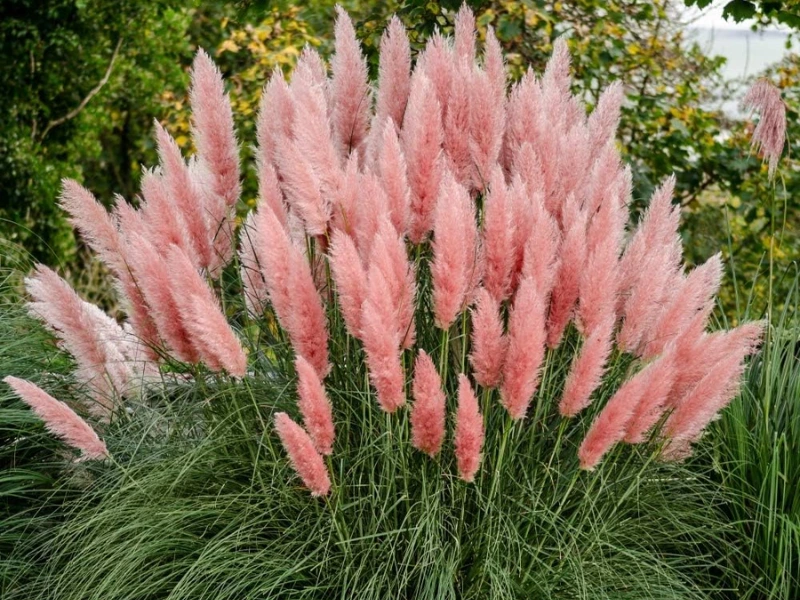
When do Pampas Grass Bloom
Pampas grass typically begins blooming in late summer through early fall. Depending on your climate, the plumes can hang around well into winter, especially if you don’t cut the plant back. In warmer zones, they might even stick around all season long, offering a dramatic winter silhouette.
Pampas grass produces separate male and female plants, but it’s the females you’re probably swooning over. They’re the ones with those silky, full, and ultra-fluffy plumes that range in color from creamy white and silvery tones to soft pinks—depending on the variety.
While the fresh blooms don’t have a strong scent, once dried, they may carry a subtle hay-like aroma, making them a favorite for dried flower arrangements and stylish home décor.
How to Encourage Pampas Grass Bloom
Want your pampas grass to strut its stuff? Here’s what it needs to thrive:
-
Full sun—at least 6 hours a day. No cheating here; more sun = more plumes.
-
Well-drained soil—roots don’t like to sit in soggy conditions.
-
Skip the high-nitrogen fertilizers—too much nitrogen encourages leafy growth at the expense of flowers. If you fertilize, go with a balanced, low-nitrogen mix in early spring.
Also, make sure to prune back dead foliage in late winter or early spring. Clearing out the old growth gives new shoots the energy and space to bloom beautifully.
Common Problems With Pampas Grass
Pampas grass is generally tough, pest-free, and pretty easygoing. But like any plant, it can come with a few quirks and concerns. Here’s what to watch for and how to handle them with confidence.
Flammability
One of the most important things to know: pampas grass is highly flammable, especially when it’s dry or dead. This is why it’s best not to plant it near buildings, fire pits, grills, or any open flames. Regular pruning helps reduce fire risk, and if you’re in a dry or fire-prone area, it’s a good idea to choose a sterile variety. These don’t reseed wildly, so they’re also less likely to spread out of control and become a fire hazard.
Sharp Leaf Edges
While the plumes are soft and decorative, the leaf blades are anything but. The edges are razor-sharp and can easily cause cuts if handled without protection. Always wear sturdy gloves and long sleeves when trimming or dividing pampas grass. It’s also wise to avoid planting it along walkways or in places where children or pets might brush against it.
Wildlife Hideouts
The dense growth of pampas grass can create a cozy shelter for small critters—including rodents and even snakes in some areas. This is more likely if the plant is left untrimmed or there are food sources nearby like birdseed or compost piles. Keeping the grass neatly pruned and avoiding nearby attractants will usually prevent any unwanted guests from moving in.
Center Rot and Dieback
If old, dead growth isn’t cleared out annually, it can start to smother the plant from the inside. Over time, this leads to a hollow, rotting center that’s hard to reverse. To avoid this, make pruning a yearly habit in late winter or early spring. Cut the plant down to about 12 inches, and remove all dead material from the base. If your clump is large and overgrown, dividing it every few years will keep it healthier and prevent this issue from developing.
Environmental Considerations
Let’s be real: pampas grass is gorgeous, but it has a wild side.
Is It Invasive?
Yes, in certain areas—especially places with mild winters and lots of open space like California, Hawaii, and parts of the Southeast. It spreads aggressively through wind-dispersed seeds and can quickly take over natural habitats, outcompeting native plants and creating fire hazards.
What You Can Do
-
Choose sterile cultivars like ‘Pumila’ that don’t produce viable seeds
-
Avoid planting near natural habitats or water sources
-
Always dispose of cuttings responsibly to avoid spreading seeds
If you’re in an affected state, consider alternatives like maiden grass (Miscanthus sinensis) or feather reed grass (Calamagrostis).
Frequently Asked Questions about Pampas Grass Plants
1. Is pampas grass invasive in the U.S.?
Yes—in some states and regions. Before planting, check with your local extension office or trusted garden center to make sure it’s safe in your area.
2. Can pampas grass grow in pots?
Absolutely! Go for a dwarf variety like ‘Pumila’ and use a large pot with excellent drainage. Great for patios and balconies.
3. How tall does pampas grass grow?
Standard types can grow 8 to 12 feet tall, while dwarf varieties usually reach 4 to 6 feet—still pretty impressive!
4. How often should I prune it?
Just once a year, in late winter or very early spring. Cutting it back to about 12 inches clears out old growth and gives new shoots room to grow.
Final Thoughts
So, is pampas grass worth planting? Absolutely – if you’re looking for a low-maintenance, high-impact plant that turns heads and stands up to drought, this one’s a winner.
Here’s What to Remember:
-
Plant in spring or fall for best results
-
Give it full sun and space to grow
-
Choose non-invasive varieties in sensitive zones
-
Great for privacy, pots, and modern landscape design
And hey, don’t be afraid to get creative. Whether you’re growing pampas grass in the ground or in containers, you can customize your setup to match your space and style.
Want more garden tips, low-maintenance plant ideas, or container gardening hacks? Explore our latest articles here.
Now go get planting—your dreamy, fluffy garden awaits!

7 Vegetables to Plant in December for a Bountiful Winter Harvest
Winter gardening is a challenge many new gardeners shy away from. But if you’re among [...]
Dec
9 Common Christmas Cactus Problems and How to Fix Them
Have you ever walked past your Christmas cactus and wondered why it suddenly looks sad? [...]
Nov
Swedish Ivy Care: How to Grow a Healthy, Thriving Plant
Have you ever looked at your Swedish Ivy and wondered why the leaves are turning [...]
Nov
Avoid These 10 Garlic Planting Mistakes for Bigger, Healthier Bulbs
Growing garlic at home is one of the most satisfying things a gardener can do [...]
Nov
How to Prevent Christmas Cactus Bud Drop: Tips for a Healthy Bloom
Have you ever noticed your beautiful Christmas cactus (Schlumbergera) starting to lose its buds just [...]
Nov
Discover 7 Stunning Types of Night-Blooming Cereus
Have you ever waited for a flower that only opens at night and then disappears [...]
Nov